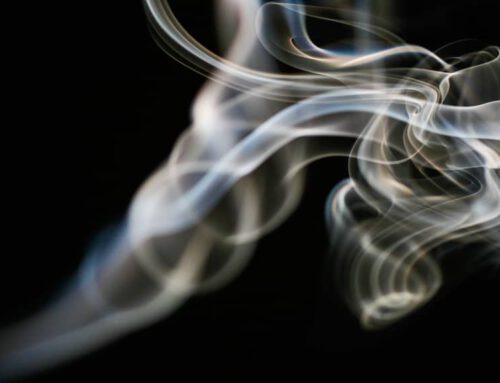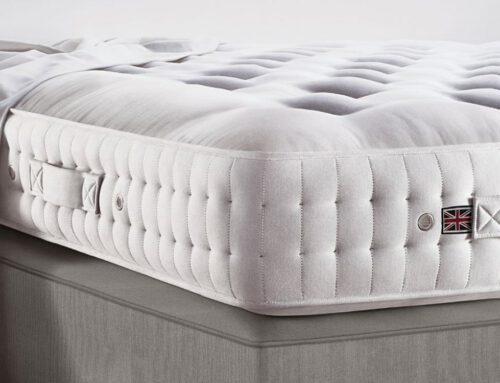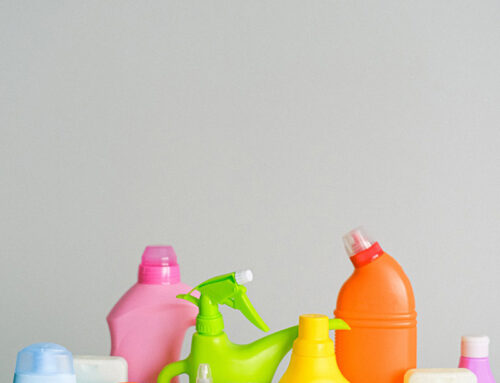As environmental awareness grows, eco-friendly cleaning services are becoming increasingly popular. These services offer a green approach to deep cleaning, using sustainable products and methods that are gentler for both the planet and human health. Focusing on water conservation and environmentally responsible practices, they thoroughly clean without harmful chemicals or excessive waste.
Green cleaning techniques, such as steam cleaning and microfiber cloths, are at the forefront of this eco-conscious movement. This guide delves into the benefits of choosing an eco-friendly end of tenancy cleaning, explores essential green cleaning products and tools, and outlines sustainable cleaning techniques for different areas of a property. It also advises selecting a responsible cleaning service provider, ensuring tenants and landlords maintain high cleanliness standards while minimising environmental impact.
Benefits of Eco-Friendly End of Tenancy Cleaning
Environmental Impact
Eco-friendly cleaning services have a significant positive impact on the environment. They use biodegradable ingredients that decompose naturally without leaving harmful residues, which helps maintain ecosystems’ integrity. Unlike traditional cleaning products that contribute to water pollution, green cleaners are designed to be benign towards aquatic systems. They lack phosphates and other harmful ingredients that can cause eutrophication, which suffocates aquatic life. Additionally, many eco-friendly cleaning companies are committed to reducing their carbon footprint and often use sustainable packaging practices, such as recyclable containers, which help to curb the global waste problem.
Health Advantages
The health benefits of using eco-friendly cleaning services are substantial. These services utilise natural and non-toxic ingredients, minimising exposure to harmful substances such as ammonia, chlorine, and phthalates. Reducing toxic chemicals creates a healthier indoor environment, lowering the risk of respiratory issues, skin irritation, and other health concerns associated with chemical exposure. Green cleaning products are particularly beneficial for people with sensitive skin or respiratory problems, as they are less likely to trigger allergic reactions. Furthermore, they improve indoor air quality by producing fewer volatile organic compounds (VOCs), producing cleaner and fresher air in living or working spaces.
Cost-Effectiveness
While the initial cost of eco-friendly cleaning products and services may be slightly higher than conventional alternatives, they offer long-term cost benefits. These products are often more concentrated and require fewer products to achieve the same level of cleanliness, resulting in reduced consumption and lower overall costs over time. Additionally, by choosing eco-friendly cleaning services, businesses and individuals can save on health-related costs associated with exposure to harmful chemicals found in traditional cleaners. Some governments also offer incentives, such as tax rebates, to promote green businesses, which can further contribute to cost savings.
Learn more: How to Clean Windows Yourself
Essential Green Cleaning Products and Tools
Natural Cleaning Solutions
Eco-friendly cleaning services rely on natural ingredients that are gentle on the environment and human health. Baking soda is a versatile and mild abrasive effective for scouring surfaces and neutralising odours. White vinegar, with its natural acidity, acts as a powerful degreaser, descaler, and disinfectant. Lemons offer a pleasant scent and natural acidity, making them valuable for deodorising and stain removal. Essential oils like tea tree, lavender, and eucalyptus add fragrance to homemade cleaning solutions while providing natural antibacterial properties.
Reusable Cleaning Equipment
Eco-friendly cleaning services use reusable and sustainable materials to reduce waste. Durable, refillable spray bottles store homemade cleaning solutions, cutting down on single-use plastic waste. Glass jars serve as storage containers for DIY cleaners, further reducing plastic packaging. Bamboo scrub brushes offer an eco-friendly alternative for tackling tough kitchen stains without contributing to microplastic pollution.
Microfibre Technology
Microfibre cloths and mops have revolutionised green cleaning practices. These ultra-absorbent tools trap dirt and bacteria without harsh chemicals, making them ideal for cleaning countertops, windows, mirrors, and appliances. Microfibre materials are strong, resistant to tearing, and produce minimal lint. They are particularly effective when used with water alone, eliminating the need for chemical cleaners in many situations. However, it’s important to note that microfibre is unsuitable for cleaning up body fluids or in susceptible areas where biocides are essential.
Learn more: How to Remove Cigarette Smoke
Eco-Friendly Cleaning Techniques for Different Areas
Kitchen and Appliances
Eco-friendly methods are as effective as harsh chemicals for a sparkling kitchen. One can make a paste using baking soda and water to clean the oven. This mixture easily removes grime when spread on the oven’s bottom and left overnight. For dishwashers, a simple refresh involves placing a bowl with white wine vinegar on the top rack and running an empty cycle. This natural solution effectively eliminates odours and bacteria.
To tackle greasy build-up on floors, a mixture of vinegar and warm water (1:10 ratio) works wonders on tiles, lino, or vinyl. For shiny metals, a paste of equal parts salt, vinegar, and flour can restore the lustre to brass, copper, and steel without harsh chemicals.
Bathrooms and Toilets
Bathrooms benefit significantly from natural cleaning solutions. A spray bottle filled with equal parts white vinegar and water is excellent for removing soap scum and general grime from tiles, sinks, and bathtubs. For stubborn mould, neat white distilled vinegar can be sprayed directly onto affected areas and left for an hour before rinsing.
To clean toilets, sprinkle baking soda around the bowl and add a cup of white vinegar to the water. This combination creates a fizzing action that helps remove stains and odours. For grout, gently scrubbing with a toothbrush, baking soda paste, and water can restore cleanliness without harsh chemicals.
Carpets and Upholstery
Eco-friendly carpet cleaning starts with thorough vacuuming using a HEPA filter to capture allergens. A mixture of equal parts white vinegar and water can be effective for stains. Spray the solution on the stain, let it sit for a few minutes, then blot with a clean cloth.
Baking soda has an excellent effect on carpets. Sprinkle it over the carpet, brush it into the fibres, and leave it overnight. Vacuuming the next day will remove odours and loosen the embedded dirt. For a deeper clean, a soft-bristled brush, warm water, and a small amount of eco-friendly carpet cleaner can gently scrub the carpet.
Learn more: How to Clean Mattress
Choosing a Sustainable Cleaning Service Provider
When selecting an eco-friendly cleaning service for end of tenancy, it’s crucial to consider several factors to ensure the provider aligns with sustainable practices. Here’s what to look for:
Certifications to Look For
Reputable eco-friendly cleaning services often hold certifications that validate their commitment to sustainability. Some key certifications include:
- EU Ecolabel: This widely recognised symbol indicates adherence to strict environmental criteria.
- Cradle to Cradle Certified™: Evaluates products based on their lifecycle ecological impact.
- The Carbon Trust Standard: Certifies a company’s efforts to reduce its carbon footprint.
- Allergy UK Seal of Approval: Ensures products are safe for people with sensitivities.
Questions to Ask
To gauge a provider’s sustainability credentials, consider asking:
- What eco-friendly products do you use?
- Are your cleaning methods environmentally responsible?
- Do you have any green certifications?
- How do you minimise water and energy consumption?
- What’s your policy on waste reduction and recycling?
Red Flags to Avoid
Be wary of providers who:
- Can’t provide transparent information about their eco-friendly practices
- Use products with harsh chemicals or strong fragrances
- Don’t offer transparency about their cleaning methods
- Lack of proper training for their staff on sustainable cleaning techniques
By carefully considering these factors, one can choose a cleaning service that delivers excellent results and contributes to a healthier environment.
FAQs
What does a comprehensive end of tenancy cleaning entail?
A thorough end of tenancy cleaning should cover mopping floors and tiles, vacuuming and steaming carpets and rugs, removing cobwebs from walls, ceilings, and skirting boards, cleaning windows, doors and handles, dusting and polishing surfaces like tables and sideboards, and eliminating limescale from sinks, showers, and bathtubs.
Is it permissible for landlords to impose cleaning charges at the end of a tenancy?
Generally, landlords cannot charge tenants for end of tenancy cleaning services. It’s important for tenants to understand their financial responsibilities, which typically do not include paying for professional cleaning at the end of their lease.
What areas should be prioritised during an end of tenancy clean?
The focus should be on removing cobwebs from ceilings and corners, wiping dust from the tops of doors, picture frames, and wall skirtings, dusting all light fittings and lampshades, cleaning and polishing metal ornaments and fittings, and vacuuming and mopping floors.
Why might end of tenancy cleaning be more costly than regular cleaning?
End of tenancy cleaning usually involves a more thorough, deep clean of every room and standard appliance in the house, which accounts for its higher cost. Be mindful that some services might incur additional charges, as not all appliances are automatically included in the standard cleaning package.






